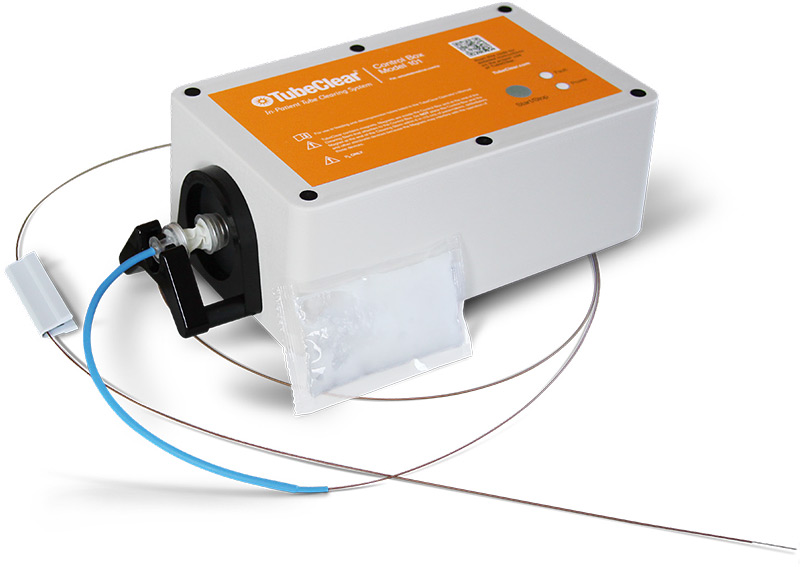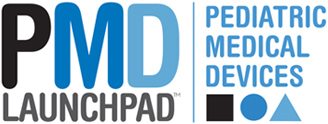Actuated Medical Is Overcoming Engineering and Regulatory Challenges To Enhance Feeding Tube Usage for Pediatric Patients.
 Feeding tubes are required when critically ill or severely compromised patients are unable to swallow food or medication. Approximately 7 million feeding tubes are placed each year. The problem is that these tubes often become clogged at reported rates from 12.5% to >35% thus ~1.8 million clogged tubes each year. For the pediatric market, clogged feeding tubes can occur more often due to the narrow diameters. The lack of nutrition and medication quickly exhausts the patient’s energy reserves and the patient may develop dehydration with electrolyte abnormalities more quickly than in adults. When a tube cannot be cleared by standard practice, it is replaced which then puts the patient at risk for surgical intervention, tube misplacement and dislodgement.
Feeding tubes are required when critically ill or severely compromised patients are unable to swallow food or medication. Approximately 7 million feeding tubes are placed each year. The problem is that these tubes often become clogged at reported rates from 12.5% to >35% thus ~1.8 million clogged tubes each year. For the pediatric market, clogged feeding tubes can occur more often due to the narrow diameters. The lack of nutrition and medication quickly exhausts the patient’s energy reserves and the patient may develop dehydration with electrolyte abnormalities more quickly than in adults. When a tube cannot be cleared by standard practice, it is replaced which then puts the patient at risk for surgical intervention, tube misplacement and dislodgement.
Actuated Medical, Inc. (Actuated) has developed the TubeClear system to address this problem. The TubeClear system aims to maintain optimal enteral therapy (i.e., medication, nutrition and hydration), reduce interruptions to enteral therapy for patients, reduce the time healthcare practitioners spend keeping tubes patent, and save significant time and money by quickly restoring patency to clogged feeding tubes.
But, as commonly found, there were challenges to successfully transitioning an adult device to the pediatric market. Often the adult device is too big, too strong, or simply inappropriate for pediatrics. In this case, even though TubeClear is considered by the FDA to be “a non-significant risk device” there was still concern with moving TubeClear into the pediatric market.
The challenge to expand TubeClear’s indications to the pediatric population is threefold:
- The first is scale. Pediatric tubes are inherently smaller, and the Clearing Stems now had to work in a much smaller tube. This is largely an engineering challenge. This has been overcome with the development of the TubeClear Clearing Stem model TC-0608 which operates in a 6 French tube and GJ-1422 which operates in GJ tubes 14 – 22 French.
- The second is regulatory. Rightly so, FDA assesses safety and efficacy in pediatric patients differently than in adults. Actuated needs to comply with FDA requirements for pediatrics, which in some respects can be more stringent than for the adult population. Currently, the Children’s Hospital of Philadelphia (CHOP) is conducting an IRB approved clinical study on the TubeClear system to collect the behavioral data on 15-20 pediatric patients requested by the FDA for the pediatric indication.
- Third is market size. While there is certainly a medical need, the market is relatively small. Because developing a medical device is expensive, medical device firms typically look for a large market to offset their up-front R&D investment. However, this combined with the regulatory burden often keeps larger firms out of the pediatric market. Actuated Medical has developed the TubeClear system in support with FDA-Pediatric Device Consortium support, as well as NSF and NIH/NICHD SBIR funds.
To receive FDA clearance, Actuated needed to investigate several factors. Among them was to investigate the behavioral response in a pediatric clinical study setting – a factor that was not required for clearance in the adult population. Actuated needed a research partner at a recognized children’s hospital, which brought the team to CHOP and the Pennsylvania Pediatric Device Consortium (PPDC). After reading a paper by a CHOP nurse, as well as a press release announcing the PPDC, Actuated contacted PPDC team members to conduct the clinical study necessary to expand TubeClear’s indications to pediatrics. Since then, Actuated worked closely with the PPDC team to design a safe and informative study with submission to CHOP’s Medical Device Committee and internal IRB. The TubeClear study at CHOP is ongoing.


